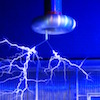Friday Flyer on Tuesday, February 21, 2023
We're back after travel and Presidents Day! Enjoy!

Spotlight on the Oklahoma State University QuarkNet Center
The Oklahoma State University QuarkNet Center continues to be very active, working closely, as it does every year, with its sister University of Oklahoma Center. QuarkNet summer workshops alternate between the two centers every-other-year, and OSU takes on the role of hosting masterclasses each year for all of Oklahoma. In fact, OSU routinely goes above and beyond to accommodate physics classes from all over the state, usually holding multiple masterclasses each year. Last year, OSU held two masterclasses, and this year they are on track to do four! Since both universities do ATLAS research, OSU does ATLAS masterclasses exclusively.
Last summer, the OSU/OU workshop was at Oklahoma State. The teachers worked on Coding, Higgs@10, and a share-a-thon. It will be fun to see what they do next.


News from QuarkNet Central
International Masterclasses: Masterclasses are upon us! Videoconferences have already started at CERN and begin this Saturday, February 25, at Fermilab. Don't forget that QuarkNet teachers can go to the Masterclass Stipends 2023 form to be paid for out-of-class hours spent with students on IMC 2023. Finally, here is the latest IMC Circular.
Masterclass orientations have begun! Most are done online and are useful for mentors and teachers. Learn more in the Orientations Library pages for LHC or MINERvA masterclasses and contact Spencer, Shane, or Ken to sign up. Orientations do not take long and are a great way to ramp up the teachers and any new team members. (Teachers can get a stipend for this as well.)
International Muon Week: IMW 2023 is still going and will end on Friday February 24. You can still get involved: fill out the registration form and look for information the IMW23 page. If you have questions, contact Mark.
RFP: There is still time for centers to respond to the Quarknet RFP! Center leaders, go to the QuarkNet Request for Proposals form. If you haven't done this yet, please complete the form ASAP, even if you are not yet sure of all details. Note that QuarkNet will continue to support both in-person and virtual experiences in 2023. If you have questions, contact your QuarkNet staff member.
Data Activities Portfolio: ¡Actividades, ahora en español! There are now four activities that have Spanish Language versions:
Rolling with Rutherford
Shuffling the Particle Deck
Calculate Top Quark Mass
Calculate Z Mass
They can be found using the Curriculum Topics pull down menu and selecting Spanish Language.

Physics Experiment Roundup
Let's start with outer space. According to Symmetry, scientists are developing new instruments to create the next 3D maps of the universe. We at FF think that deserves a "Wow." Way closer to home, but still way far, we learn in Physics Today that, in the Kuiper belt, there is a planetoid with a far ring that should not exist. Welcome to Quaoar.
We know that g-2 probes the muon magnetic moment. But what about its more famous, less massive cousin, the electron? Well, we learn from Nature that physicists have now found the most precise value yet of the electron magnetic moment. And it is yielding surprises. Over at the LHC, read up on this CMS recap for 2022.

Resources
One resource that teachers have been going to for a long time is HyperPhysics from Georgia State University. Check it out if you have not already used it and note, via Physics Today, that HyperPhysics is now 25 years old. Happy Birthday! Not at all related but also from Physics Today: in the "what can possibly go wrong" department we have suggestion to use moon dust to lower the temperature here on earth.
Don Lincoln has a new video which asks, "Can protons decay?" This is actually an important question for understanding the Standard Model and beyond. Fortunately, if they do, it is very, very rare. And speaking of things that may or may not be, APS Physics reports on a possible new way to search for sterile neutrinos.

Just for Fun
First: you try chemicals; you try a snake; you call a plumber. and you still can't really understand that clog in your drain. What will you do? Well, try physics instead and learn about the self-sabotage of suspensions. But wait, there's more! You can use that back-up from your drain in the deep winter to see the beauty of freezing water. (Thanks to Physics Today and apologies to the writers of late-night television ads.)
Over at XKCD, they have a new kind of color charge.
Should Star Wars have been directed by Stanley Kubrick? You judge, based on this dataset or this one. Or maybe George Lucas should get the last laugh.
QuarkNet Staff
Mark Adams: adams@fnal.gov
Ken Cecire: kcecire@nd.edu
Spencer Pasero: spasero@fnal.gov
Shane Wood: swood5@nd.edu
